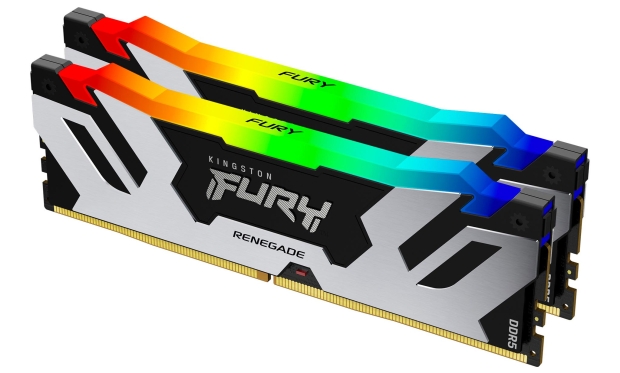So, what are 24 Gbit-based memory modules all about, and why did they come about versus the traditional 16 Gbit-based kits we have grown accustomed to as PC enthusiasts? Let's explore.
Starting with the non-binary component of these sets of memory, it refers to the non-binary design of the memory IC or the chips themselves. In the past, memory ICs have gone with the standard 16 Gbit layout, leading to the standard "binary" modules and kit sizes which double in density: 1024MB, 2GB, 4GB, 8GB, 16GB, 32GB, 64GB, 128GB and so on. With non-binary ICs, you now have new DIMM arrangement density options, which offer 24GB and 48GB densities for single and dual-sided DIMMs. More density will likely come to fruition as each IC becomes available with higher density within each IC.

We then come to the question of why they exist, and to explain this, we have to step outside the enthusiast segment into the realm of server space, where this will make a lot more sense. In many server deployments, systems can be broken into VMs or virtual machines, where you assign specific memory and CPU cores, along with other resources needed for a particular VM or set of VMs. Also, not just within VMs, but some applications these systems use have a specific memory per core density that is ideal for said application. That can lead to the traditional binary layout not being enough, requiring more memory DIMMs, or even too much and not matching the memory population needs to utilize the capabilities of the host system properly.
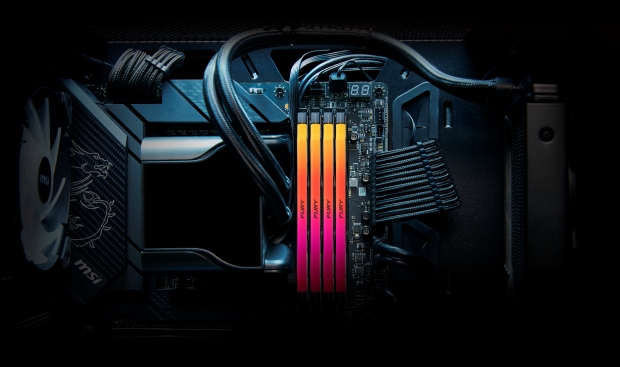
With that understanding of where the non-binary needs come from, it is important to shift gears back to the enthusiast PC spaces. Now that these memory ICs exist in 24 Gbit format, it would not take long for memory manufacturers like Kingston to adopt them into the typical UDIMMs for consumer desktop systems and push the performance of their Kingston FURY line of modules for higher performance in personal computers and gaming systems. The same issues that nudge this development for vertical markets like servers can also be considered for power users within our community, whether it be VMs optimal core-to-memory ratios for heavy workloads in your DIY workstation, where non-binary modules could match your specific needs.
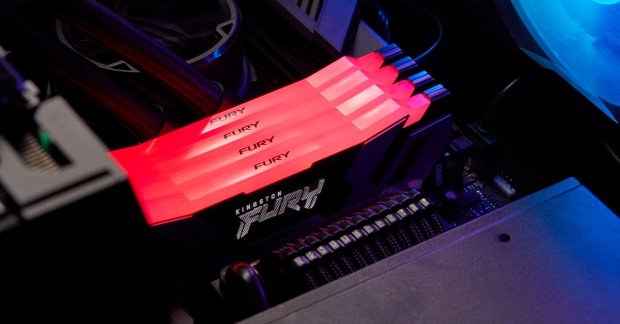
Beyond just workloads, we see increased system requirements in gaming with GPU framebuffers growing towards the 24GB range with the past few flagship GPU releases. We could see GPU memory capacity going even higher as game assets increase due to the path of higher resolution gaming and the higher visual fidelity expected from modern gamers. System memory or DRAM feeds everything, as it is where the system stores fetched data for processing as it is passed around to the GPU, CPU, and storage as requested and used. This includes GPU texture data and game data, so as more textures are needed, the need for more DRAM will follow suit to ensure you do not run into hitching and you fill the system RAM with all the game assets and textures.
24 Gbit modules mean you can easily move one two-stick kit of DDR5 at 32GB of capacity to 48GB by simply swapping to newer non-binary kits, increasing the density of a two-stick kit by fifty percent, on single-sided modules with this change of ICs, which is a true in-place upgrade for your gaming setup, if you found yourself in a scenario where your system simply needs more available RAM, but in this instance, maybe not 64GB of RAM. And just to be clear, mixing of 24-bit and 16-bit memory is not recommended as it may disable channel architecture optimizations.
Another benefit with non-binary ICs, as we alluded to above, is the fact that this sort of in-place upgrade allows for a more cost-effective solution for installations where you need a higher density solution without changing platforms for more memory channels or even choosing a costlier solution of adding more 32 Gbit based ICs where massive density can be cost prohibitive.
The switch to non-binary ICs, to put it simply, allows users more flexibility to build out the systems they need for the work they need to do. Whether gaming, productivity, content creation, or even servers and workstations, 24 Gbit-based DRAM offers an in-between for those requiring more density without the previously mentioned need to change the platform or possibly overspend for more expensive, extremely high-density DIMMs, should your needs land between 16GB and 32GB per DIMM needs. The same can be said for dual-sided modules, where non-binary currently offers 48GB per DIMM in the consumer market, and this provides a position between the 32GB and 64GB modules, of which the latter option is quite costly.
While working with Kingston to get this information out there, we feel it is only fair to share what Kingston offers. Kingston will send us a kit for review, which sparked the idea to explain why these exist and what they are, as it is a question asked by the enthusiast audience. Kingston, a mainstay in computer memory since the early days, was the perfect resource to help explain why this exists and what it is all about.
The modules most of you will be interested in are Kingston's FURY DDR5 lineup of performance enthusiast gaming memory. Let's look at those options now and what Kingston offers to whet the appetite of users looking for a DDR5 memory kit that pushes their gaming performance to new levels. Kingston plans on rolling out non-binary options for other memory lines in the future.
Kingston FURY Renegade DDR5 Memory (RGB and non-RGB)
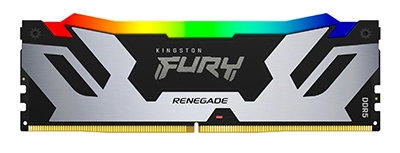
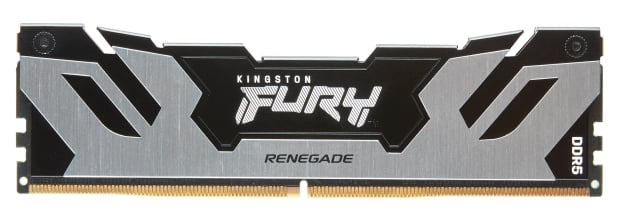
- Designed for extreme performance on next-gen DDR5 platforms, it is ideal for gamers, enthusiasts, content creators, and extreme overclockers.
- RGB option offers dynamic customizable RGB lighting with patented Kingston FURY Infrared Sync Technology™ that makes sure RGB lighting effects stay in perfect lock-step.
- Intel® XMP 3.0 Certified, making overclocking a breeze with advanced pre-optimized factory timings.
- Aggressive black & silver aluminum heat spreaders with black PCB to complement the look of the user's latest PC build.
- Speeds: 6400MT/s, 7200MT/s
- Capacities: Singles - 24GB & 48GB / Kits of 2 - 48GB & 96GB
See Kingston's full line of DDR5 FURY RAM here for more information.
